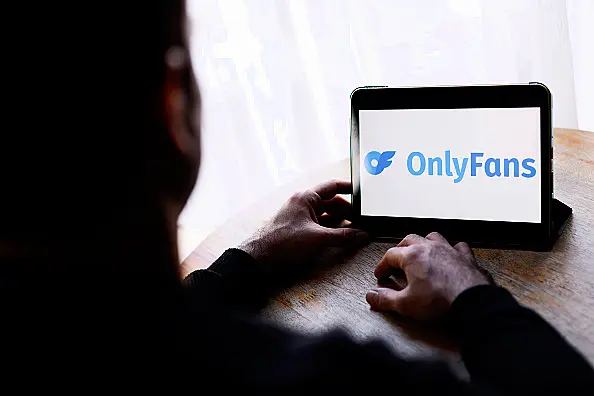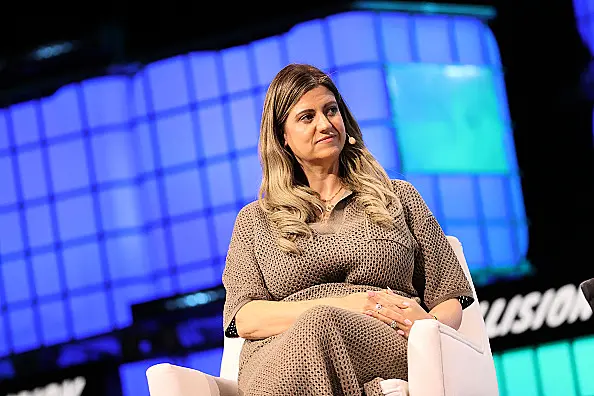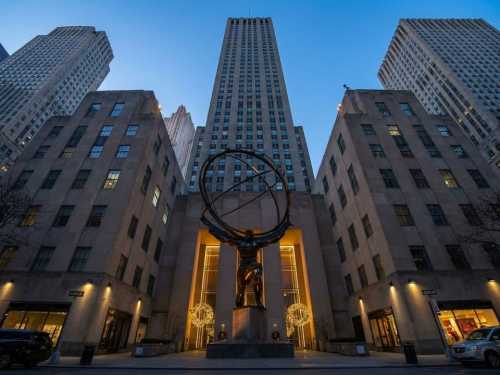
OnlyFans is on a mission to redefine porn.
With €1.25 billion in revenue and over 300 million users, the fast-growing company has fused sex work with the online creator economy so successfully that it has branched out into comedy, music and motor-racing.
But for all its ambition and influence, the inner workings of OnlyFans remain opaque.
It has just a few dozen employees even as its user base has almost quadrupled in recent years. Its billionaire owner is rarely seen in public or even mentioned in talks by its chief executive. There’s no company sign outside its registered London address, and a significant but secretive part of its operations – including content moderation – is based in Ukraine, a country at war.
Reuters traced OnlyFans’ journey from an obscure, porn-free site created by a British family to an adults-only social media phenomenon turbocharged by erotic performers and celebrity influencers, worth billions of dollars.
As it’s grown, OnlyFans has sought to use explicit content – its seemingly bottomless source of revenue – as a springboard to greater scale, positioning itself as a tech pioneer with a place among social media giants such as Instagram and X.
Key to that effort is making porn more socially acceptable and distancing the company from the abuses often associated with the industry.
The public face of OnlyFans is CEO Keily Blair, an Irish lawyer and self-described feminist and “safety nerd” promoted to the top job in 2023.
In public appearances, Blair (42) presents the platform as lucrative and empowering, particularly for women, and often mentions her two daughters. “I want them to have a good online life,” she told delegates at a UK child-protection conference in 2023. “I want the same for your kids.”
People flock to OnlyFans, she says, because it offers “ethical” porn – although she prefers not to use what she calls the “P-word.”
But the P-word drives the business. Creators typically make money from subscribers by posting porn and chatting with them online. Created in 2016, OnlyFans says it has paid out over €19 billion to its creators, who now number 4.1 million. The company takes a 20 per cent cut of creators’ revenue.

Keily Blair is the chief executive officer of OnlyFans. Photo: Dia Dipasupil/Getty
OnlyFans didn’t respond to requests to interview Blair or the company’s owner, Leonid Radvinsky. The company and its parent, Fenix International Ltd, didn’t respond to most questions for this story.
This account of the company’s rise is based on interviews with more than a dozen people with direct knowledge of OnlyFans’ operations, along with dozens of creators, former creators, and experts in the porn industry, content moderation and online safety. Reporters also reviewed corporate filings, court records, websites and speeches related to OnlyFans and its key staff.
OnlyFans pledges publicly that it’s building “the safest social media platform in the world.” It operates behind millions of creator paywalls, however, which make this claim almost impossible to independently assess.
Those paywalls can hide serious harm. In a series of investigations published this year, Reuters examined police and court records that documented multiple cases of sexual slavery, child sexual abuse material, and nonconsensual or “revenge” porn on OnlyFans between 2019 and 2024.
OnlyFans says it prohibits child sexual abuse material and “modern slavery,” including sex trafficking, and removes illicit content as soon as it is detected. The company also has said it invests heavily in content moderation, vetting “everything” on the site, and works closely with law enforcement globally to support their investigations.
Radvinsky, the owner Blair rarely mentions in public, bought OnlyFans in 2018 and is its sole shareholder. Now 42 years old, he has paid himself at least a billion dollars in dividends over the past three years, corporate filings show.
For a head of a famous company, he is little known.
Even with specialized search tools, Reuters could find only six different photos of Radvinsky online. Of four websites that appear to belong to him, only one mentions OnlyFans by name; none reveals that porn is a major source of his fortune.
Instead, they describe him as an angel investor and philanthropist who dedicates “a huge amount of time, effort and money to non-profit causes.”
Fish and chips and porn
Radvinsky cashed in on OnlyFans. But he didn’t create it.
That was British businessman Tim Stokely, a native of Essex, a county northeast of London. As a schoolboy, Stokely’s “first entrepreneurial endeavor” was charging classmates to collect their orders from a local fish and chips shop, according to an archived version of timstokely.com, a personal website.
But as an adult, it was porn that made Stokely rich – after a couple of false starts.
In 2011, he launched Glam Worship a fetish site that allowed users to send gifts and money to dominatrixes. Slogan: “Your new addiction.” A year or two later, he unveiled Customs4U, where women uploaded personalized porn videos for paying customers.
Both ventures failed. Stokely tried again. After an inspirational chat with friends, according to timstokely.com, he set out to create a website “that made it easy for all creators to monetize their content” – in other words, a social media platform with a pay button.
That platform was OnlyFans.
“The team hit the ground running, pulling late hours to bootstrap the company: From writing code to create a minimal, easy-to-use interface to personally messaging early adopters,” Stokely’s website said.
Stokely’s family – described as “very close-knit” by the website – played a central role. OnlyFans launched in 2016 with Tim as CEO and, by year’s end, his parents Guy and Deborah as directors. His brother Tom became chief operating officer in 2018.

Porn makes OnlyFans untouchable for many big banks and investors. Photo: Getty
Another of the early directors of OnlyFans was Petra, a self-described silent partner in the business who spoke on condition her surname be withheld. An American citizen living in the Netherlands, Petra worked for the porn site FreeOnes and was an expert in raising the visibility of websites on search engines. She said her main job was to drive traffic to OnlyFans. “It was never meant to be a porn site, though,” she said.
Initially, OnlyFans’ terms of service banned explicit content. Petra said the company had hoped to attract musicians and influencers from YouTube and Instagram, but couldn’t get enough of them interested.
“So we just decided to go back with what we know,” she said. “And that’s adult.”
By the end of 2017, OnlyFans had lifted its ban on porn – and the platform took off.
To expand in the US, said Petra, the Stokelys relied on Bill Fox, a prominent figure in California’s porn industry. Fox recruited dozens of adult performers to join OnlyFans, she said. They were known at the company as “Bill’s Girls,” two former contractors told Reuters. While Fox in California provided the A-list performers, the Stokelys made the business decisions in England, said the contractors, and the company expanded rapidly and chaotically.
Former Thai-British porn star Keni Styles, who worked for OnlyFans in the early years, said the company’s direction was a matter of fierce debate. He recalled one Skype meeting, around 2018, descending into a yelling match between Fox and Tim Stokely.
“Bill wanted it to be just a straight-up adult porn site. Tim had this vision that he was going to challenge Facebook, he was going to challenge Instagram. He was going to bring mainstream YouTube content-creators to OnlyFans.”
Tim, Tom and their parents couldn’t be reached for comment. Bill Fox died in 2019.
The goal wasn’t to hold onto OnlyFans long-term, Petra said. “We wanted a project that we could basically go off and sell,” she said.
In 2018, a buyer appeared: Radvinsky. How much he paid for OnlyFans has never been disclosed.
Enter Leo
The new owner was media-shy and socially awkward, said three people who’ve met him – very unlike Stokely, whose Instagram account brims with images of fast cars, porn stars and villas in Ibiza.
Radvinsky brought a wealth of experience in the rapidly evolving business of online porn.
As a boy, in the dying years of the Soviet Union, he and his parents left Ukraine for the US. He grew up in Illinois, where his first company, Cybertania Inc, was registered by his mother, Anna, in March 1999, according to company filings. Radvinsky was then only 16.
His mother couldn’t be reached for comment.
Radvinsky would describe Cybertania’s business in a 2014 court declaration as “online entertainment.” One of its earliest ventures was a website called Ultrapasswords.com, which promised links to porn-related websites, according to a 2021 story by Forbes.
It was a lucrative enterprise. A court filing by Cybertania said Ultrapasswords was generating income of about $5,000 per day in 2002 – the same year Radvinsky turned 20. The site is no longer active.
Two years later, with an economics degree from Northwestern University outside Chicago, Radvinsky started his first big porn venture: MyFreeCams, where models performed sexual acts on a live webcam feed. Viewers paid by the minute or bought virtual tokens to tip the performer.
By 2010, XBIZ, a news outlet for the porn industry, was calling MyFreeCams “one of the world’s largest adult webcam communities,” with 100,000 models on its books. It is still around today and owned by Radvinsky’s US-based MFCXY, Inc.
MyFreeCams was part of a wave of “cam sites” that capitalized on faster internet speeds. They marked a major shift in porn, which until the early 2000s was primarily made by studio-based performers and distributed on videotape, and later CDs and DVDs, or via pay-per-view TV.
Then came so-called “tube sites” in the mid-2000s. These websites didn’t produce their own porn but provided a platform for content uploaded by users – professionals and amateurs alike. Sites such as Xtube, Pornhub and xHamster, which attracted hundreds of millions of users, mainly made money through ads and by selling user data. Consumers got limitless content for free.
“Porn was more accessible than ever before, but performers were making less and less money off of it,” said Maggie MacDonald, a doctoral candidate at the University of Toronto who studies porn platforms. For the next decade, as the tube sites dominated internet porn, many performers struggled.
“And then OnlyFans comes along,” said MacDonald, an adviser to the private equity firm that owns Aylo, Pornhub’s parent company.
Under Radvinsky, Tim Stokely stayed on as CEO for the next three years, with his brother Tom as chief operating officer and their father Guy, a former merchant banker, as a co-director with Radvinsky.
The company’s fortunes soared with the Covid-19 pandemic and its lockdowns.
Millions of isolated, horny people flocked to porn sites. OnlyFans saw a surge in creators, users and revenue in the US and Europe, its main markets. Between 2019 and 2021, its pretax profits rose from $5.6 million (€5.37 million) to $432.9 million (€415 million), according to corporate filings.
Although free porn was readily available online, OnlyFans seemed to offer something different that people would pay for: personal connection. Subscribers could directly message creators, and seek companionship and intimacy. Creators made money through subscriptions, tips and sales of custom-made content.
OnlyFans offered its creators an alluring mix of gig work, sexual expression and financial freedom – and, for some influencers, a rare chance to convert big social media followings into small fortunes, so long as they were willing to strip off.
One creator who reaped huge profits is Danielle Bregoli, a rebellious teen who became famous for her 2016 TV appearance with her mother on Dr. Phil. In a segment titled, “I Want to Give Up My Car-Stealing, Knife-Wielding, Twerking 13-Year-Old Daughter Who Tried to Frame Me for a Crime,” she taunted the audience to fight her outside: “Cash me outside, how bout dah?” The catchphrase launched her career as the chart-topping rapper Bhad Bhabie, gaining her millions of followers on social media.

Danielle Bregoli, known professionally as Bhad Bhabie, used OnlyFans to launch her career. Photo: Jason Koerner/Getty
In April 2021, six days after her 18th birthday, she created an OnlyFans account, posting sexually suggestive photos. In the first six hours, she earned more than $1 million, Bregoli told Reuters. A year later, that sum had reached almost $42 million, she said.
“I had no idea it would make this kind of money,” she said. “Nobody did.”
While top creators cashed in, others scraped by. “It’s incredibly rare that you speak to someone who’s making loads of money,” said Hanne Stegeman, whose doctoral research at the University of Amsterdam focused on the experiences of online sex workers, including OnlyFans creators. “Much more often people are working quite hard to make something similar to a minimum wage.”
Roxie Roots, a former OnlyFans creator from Germany who joined OnlyFans in 2018 and left in 2021, found the work harder – and the earnings much smaller – than she’d expected.
“I kept going for years because I was like, Oh my God, I need to come out with something – at least some savings,” she said.
‘Massive explosion in content’
One former employee had a ringside view of what he called the “massive explosion of content” during the pandemic years. Zak Hembry joined OnlyFans in 2019 and worked as a content moderator from his home in Bishop’s Stortford, north of London.
Content was screened by a “programmable bot” that flagged suspect material for human moderators to review, Hembry said. He scanned this material for illicit content, which was then blocked or removed. “I’ve seen all kinds of things I wish I hadn’t seen on there,” he said, including content featuring children, animals or feces, as well as a creator who was “overeating on purpose.”
In its early years, said Hembry, OnlyFans took a “zero-tolerance” approach to creators who broke its rules. But as content flooded in under Radvinsky’s ownership, top earners were treated more leniently, said Hembry and another former contractor in the US.
Those whose accounts might have been shut down in the past began to receive warnings instead, Hembry said.
For instance, he said he once suspended an account showing an incestuous sexual encounter between adult twins – violating OnlyFans’ terms of service. Later, he said, he was exasperated to see that someone above him had reactivated the account.
“Why should you give them another chance?” he said. Hembry concluded that “money was more important” at OnlyFans than rules. The former US contractor agreed; creators who made millions of dollars for the platform could “upload whatever the hell they want,” she said.
By 2021, Hembry said he knew of more than a dozen people in the UK who worked as OnlyFans moderators.
Faced with exponential growth, OnlyFans turned to workers from Ukraine, Radvinsky’s homeland, which had a well-developed IT industry, former employees and contractors said. By February 2022, when Russia launched its all-out invasion, OnlyFans had a “huge team” in Ukraine doing content moderation and other functions, CEO Keily Blair said in a recent speech at the Trouble Club in London, which hosts talks by prominent women.
Some of those workers were recruited by a firm called StopFraud, according to four people who previously worked at StopFraud or OnlyFans. One Ukrainian ex-moderator hired by StopFraud shared with Reuters a payment receipt showing she was paid by OnlyFans.
StopFraud is almost untraceable. It describes itself as a “fast-growing, US-based company” in ads posted on a Ukrainian jobs website, but Reuters could find no business registration for it in the US, the UK or Ukraine. The firm could not be reached for comment.
OnlyFans doesn’t publicly acknowledge any relationship with StopFraud, and StopFraud’s website doesn’t mention OnlyFans. Several former StopFraud workers told Reuters they knew little about their employer. They worked from home, moderating content and vetting creators. They knew their colleagues only by nickname. One said the clandestine conditions made her feel like a “spy.” Others declined interviews, saying they had signed nondisclosure agreements.
Hembry said his UK-based content-moderation team was phased out as Ukrainian contractors took over, and he briefly moved to a job handling relations with top creators. But he could still check the queue where content awaited review, he said. Just before he was laid off in 2022, he said, the queue contained millions of items – at least 50 times the normal load he had seen the year before. He said he couldn’t see how the Ukrainian contractors would get the job done. It’s unclear how the war affected their work. After it broke out, Blair has said, OnlyFans relocated “a number of people” from Ukraine to neighbouring Poland.
By 2022, OnlyFans publicly said it was building “the world’s safest social media platform.” In July that year, it told Ofcom, the British media regulator, that while it relied on automation to flag problems, all content was ultimately reviewed by a human moderator.
At a site with OnlyFans’ volume of content, that task was “virtually impossible” without hiring “thousands of moderators,” said Jason Pomales, former director of trust and safety at Vimeo, a prominent video-sharing platform. “And that’s a huge cost.”
Four other content moderation experts agreed that OnlyFans’ claim of blanket human review was implausible. In November alone, the website said it uploaded almost 55 million pieces of content.
OnlyFans’ moderation process, meanwhile, remains murky. It says 80 per cent of its workforce consists of “trained content moderators,” but the company doesn’t divulge publicly the size of that workforce or how moderators are trained. That makes OnlyFans’ claims about the effectiveness of its moderation difficult for outsiders to verify.
Ofcom has collected information about moderation and other business operations directly from OnlyFans. Some of that information – including the platform’s moderation staffing levels – hasn’t been published, Ofcom said, because the law restricts what it can disclose without the consent of the businesses it regulates. However, a spokesperson added: “It’s our current understanding that every piece of content (on OnlyFans) is ultimately moderated by a human.”
Nervous banks
As OnlyFans’ popularity grew, illegal content was slipping by its moderators. People were complaining to police of abuses on the platform. The BBC had found children on the site. And OnlyFans’ bankers appeared nervous.
In August 2021, the company dropped a bombshell announcement: it would ban porn as of that October. Offering few details, the company said it was seeking to comply with requests from banking partners and payment providers. In an interview with the Financial Times, Tim Stokely blamed “unfair” treatment by banks that had flagged and rejected OnlyFans payments to its creators due to reputational risk.
The proposed ban outraged porn creators. Many felt betrayed. Lauren Phillips, an American creator who joined OnlyFans early on, said she felt like the company wanted “to use us and then throw us away.”
Six days later, OnlyFans abruptly retracted the ban, saying it had secured the “assurances necessary” to support its creators. It didn’t explain what those assurances were or who gave them. But removing porn would have crippled the platform – and cut off a growing stream of revenue for the banks handling OnlyFans’ business.
Still, it remained an uphill struggle to convince potential banking partners that porn on OnlyFans wasn’t a smokescreen for abuse, some bankers said.
In the spring of 2023, intermediaries for OnlyFans spoke with several Wall Street investment banks to explore the possibility of partnerships, according to three people involved. One said taking OnlyFans public was discussed; the others told Reuters that the intermediaries were seeking major banks to help process payments for OnlyFans.
By then, OnlyFans had eye-popping numbers: over a billion dollars in revenue, over half a billion in operating profit. Bankers would have typically fought for such business. But the talks went nowhere. The hitch, according to two of those involved, was OnlyFans’ main product: porn.
Porn makes OnlyFans untouchable for many big banks and investors, said six bankers, lawyers and other investors, all with expertise in capital markets but no ties to OnlyFans, who spoke with Reuters on condition they and their employers not be named. Four expressed concern that any due diligence done on the platform might find illegal content such as child sexual abuse material, trafficking victims and nonconsensual porn.
OnlyFans has since said it has no plans to go public. Business is booming. In 2023, content creators generated $6.6 billion on the platform. The company had more than enough free cash flow to remain privately held. Its dividend payout of $472 million to Radvinsky was more than Ralph Lauren earned from the fashion company he founded and Nike co-founder Phil Knight earned from the sportswear giant – combined.
As a reclusive porn mogul, Radvinsky isn’t usually mentioned in the same breath as the world’s eminent billionaires. But he has suggested he would like it to be.
“My goal is to one day be in a position to sign The Giving Pledge,” he says on one website that appears to belong to him, referring to promises made by Bill Gates, Warren Buffet, Mark Zuckerberg and other tycoons to give away most of their wealth to charitable causes.
Rebuffed by Wall Street, OnlyFans continued its efforts to become a mainstream company, seeking to convince the world that its porn was safe – and that OnlyFans was more than a porn site.
That job fell to its CEO, Keily Blair.
‘Ethical’ porn
At her previous role as a lawyer with the law firm Orrick, Herrington & Sutcliffe, Blair said she specialised in cybersecurity and online privacy. At least three other Orrick staff have gone to work for OnlyFans, an Orrick client.
At OnlyFans, Blair presents herself as the folksy, straight-talking leader of a company with mainstream appeal.
“We also host lots of other content,” she said in March at the SXSW conference in Austin, Texas, citing sports, comedy and music. OnlyFans also offers safe-for-work content on OFTV, a streaming platform it launched in 2021.
OnlyFans says it doesn’t even track how much porn it sells, lumping it in financially with all its other offerings. “We don’t categorise our creators by the content they produce so we don’t know what proportion are creating adult content,” a company spokesperson told Reuters last year. Blair has publicly dismissed the claim that almost all OnlyFans content is porn, without providing a figure of her own.

OnlyFans chief executive Keily Blair is an Irish lawyer and a self-described feminist. Photo: AFP via Getty
She also says the porn on OnlyFans is different from other sites. At the SXSW conference, which says it showcases “cutting edge ideas,” she explained how OnlyFans allowed adult performers to escape the “exploitative” studio system and directly profit from the content they produced. This “ethical” adult content, she said, was what drew so many subscribers to OnlyFans.
“I am a feminist,” Blair told her audience at the Trouble Club in August. “My feminism helps to inform why I do this job.”
Some see Blair’s appointment as a wily PR move for OnlyFans.
In a recent LinkedIn post, Elly Hanson, a clinical psychologist who focuses on preventing sexual abuse, questioned whether a male CEO would “be regularly invited into societal forums to wax lyrical about ‘empowerment,’ ‘authenticity’ and ‘feminism’ without robust challenge and debate? Of course not.”
Kim Swallows, an American creator who joined OnlyFans in 2017, said OnlyFans is downplaying the contributions of the porn creators whose hard work made it so rich.
“I feel like they’re definitely trying to sanitize their image,” she said.
Other current and former creators also questioned how empowering OnlyFans was for women. Roots, the former creator from Germany, said the platform drew young, potentially vulnerable women into the porn business but offered no advice on coping with its demands and lasting impact.

Entertainment I’m creating jobs with my bum: Kate Nash says Only… Read More
Producing and promoting content was relentless and punishing, and male customers wanted to “use you for their gratification,” she said. “It’s very difficult to call this feminist.”
Sophia Mayy (27), a creator from England, said she joined OnlyFans in 2021 to make “a bit of extra pocket money” and now brings home about £35,000 (€42,000) a month. “I honestly wouldn’t look back,” she told Reuters.
Even so, says Mayy, it’s a mistake for OnlyFans to treat porn just like any other content – because of the risks involved in producing it. In her case, she said, the job has damaged her relations with family and friends, and forced her to cope with loneliness, long hours and abusive male subscribers.
“Probably the biggest thing of all is the mental toll it takes on you,” she said. “You are seen as an object, you are seen as a piece of meat.”
Sourse: breakingnews.ie






